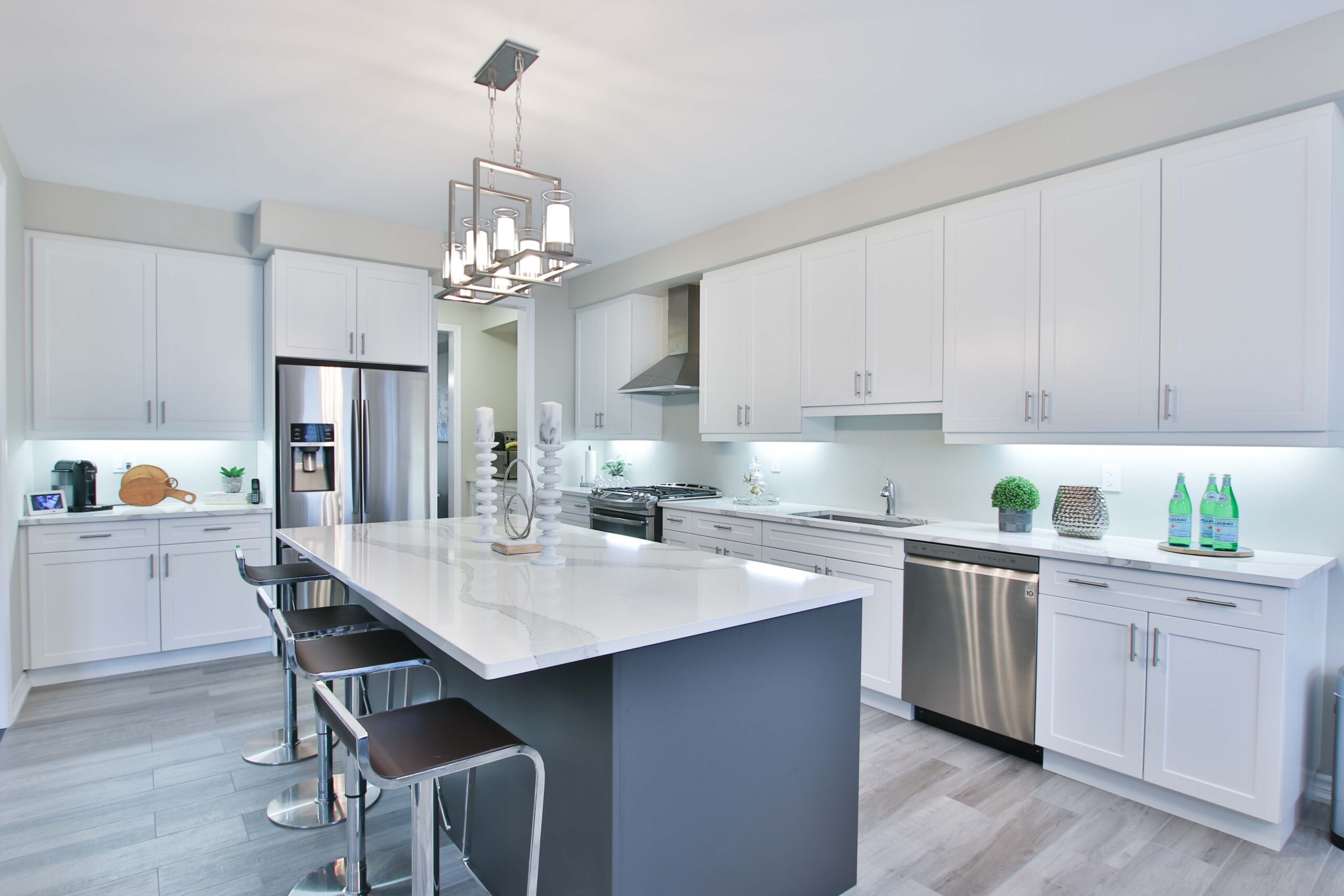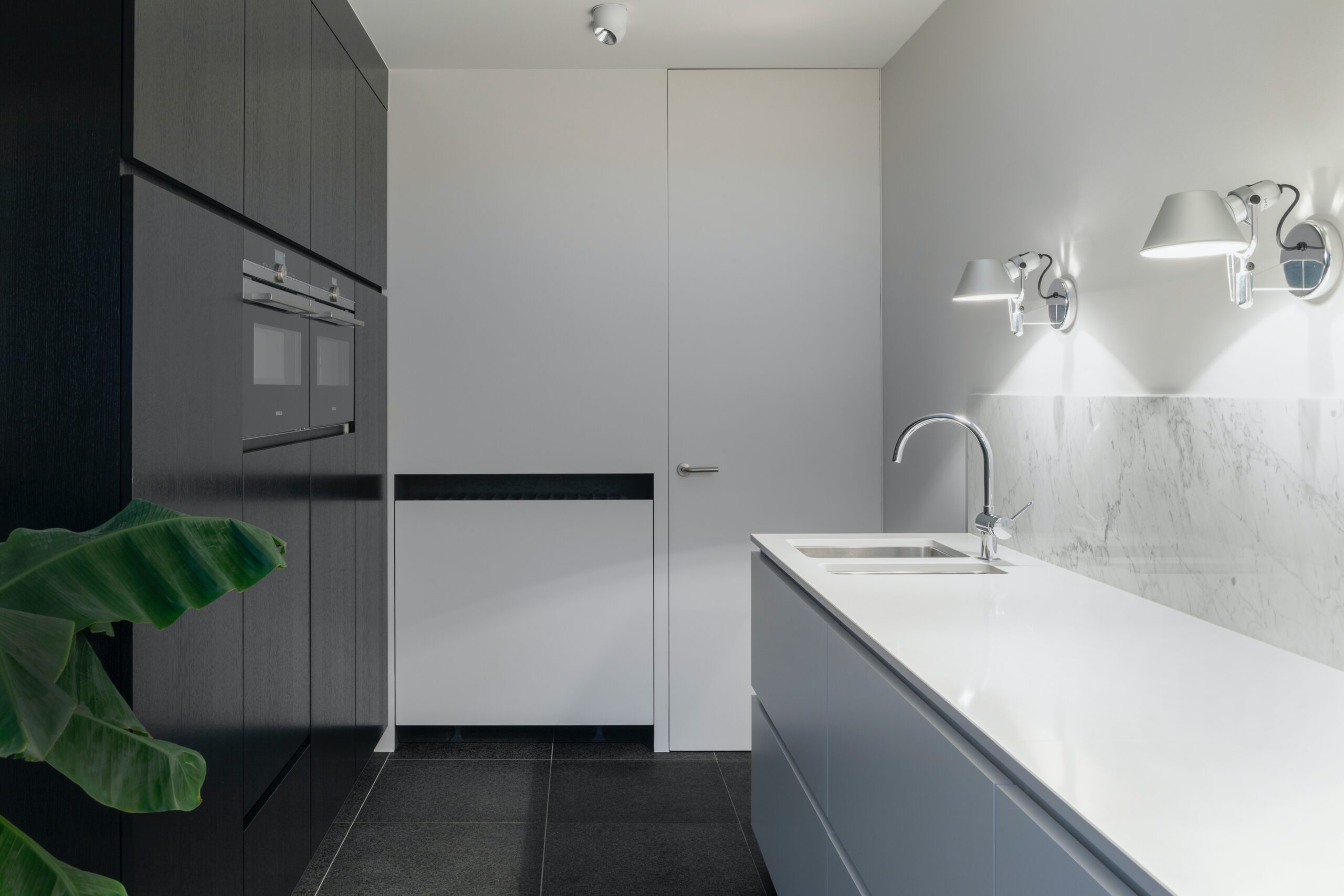Silestone vs Caesarstone vs Cambria: Which Quartz Countertop is Best?


Sam Willis
Sam Willis is an esteemed BPA Advisor and Editor specializing in Restoration & Remodeling. As a dedicated writer, Sam takes pride in sharing his extensive knowledge and expertise in residential and commercial construction, as well as restoration & remodeling. Sam plays a crucial role in offering valuable insights that shape the discourse around innovative construction practices and materials.
Quartz was once reserved for high-end homes, it was something that pushed its way into bathrooms and kitchens for giving a luxury look. Even to this day, it’s still considered a major go-to for kitchen and bathroom renovations. Since it’s a major favorite and a premium countertop material, it’s important to find a brand that works best for you. It can be confusing as a homeowner when you’re not only trying to select the best countertop material but having to pick the right brand can make it worse.
Well, there are three well-known companies that reign supreme and that’s Silestone vs Caesarstone vs Cambria. But what are the differences between these quartz brands? What makes each of these special? It will all be broken down here!
What is Quartz?
Unlike granite or marble countertops, quartz is a little different. It’s very similar to natural stone as it does possess that rock-like feeling to it. However, it’s synthetic and it consists of dust, quartz chips, and resin. All of these mimic the look and feel of natural materials. While most quartz countertops are made from quartz, you can expect that 15% may contain color pigments and resin. While it’s not all-natural, it does pose luxurious elements while still being affordable for the average consumer.
What are the Common Characteristics of a Quartz?
Before diving into Silestone vs. Caesarstone vs. Cambria, it’s important to get a general idea of the common characteristics that quartz can bring.
Visible Seams
There is a very high chance that you will see some visible seams in the quartz. Why’s that? This is due to two slabs needing to be seamed together. But some countertops are small enough to where only one slab of quartz needs to be fabricated.
Another thing to keep in mind about visible seams would be the fact that it can vary based on the installer and how skilled they are. Some installers may be able to minimize the appearance of the seams, but it doesn’t mean that it will be invisible.
Hardness
A bonus to quartz would be the fact that it’s hard and more durable compared to natural slab granite. This is due to the softer impurities and minerals being eliminated, so only the hard mineral is saved in the process.
Composition
The composition of quartz would be 93% mineral content. Thanks to this high degree, it offers a distinctive appearance and feels.
Silestone vs. Caesarstone vs. Cambria: The Quartz Manufacturers

When it comes to picking the best quartz manufacturer for your home project, it’s best to keep in mind that they’re not all the same. Each of these is going to offer its own pricing, warranty, and style.
Silestone
Silestone has quite a reputation for being a quartz manufacturer. It’s one of the brands that is underneath its Italian parent company Cosentino Surfaces while still being based in Spain. They offer some distinct advantages that can’t be found in the two other brands. One major advantage would be the fact that it offers bacteria protection on every slab. This means you won’t need to worry about the stone having bacteria, mold, or mildew on the surface.
Caesarstone
Known as one of the oldest companies in the industry, they’re based in Israel; this company has only three manufacturing facilities; two reside in Israel and one in Georgia (the country).
Cambria
This Minnesota-based company is the only American quartz brand in the world. The quarry is located in the US, and one thing that sticks out about Cambria is its sustainability strategy and the fact that they’re eco-friendly compared to its competitors. What makes them so sustainable? Cambria uses reclaimed and recycled water during the engineering process.
Silestone vs. Caesarstone vs. Cambria: What are the Differences?
When it comes down to Silestone vs Caesarstone vs Cambria, it’s all about the differences. These differences make it easier to choose which one is best for you!
Where to Purchase?
Silestone
Silestone is not just limited to countertop and backsplash materials. You can also have the option of matching Silestone designs to sinks, vanities, shower pans, and more! But where can you purchase Silestone quartz? Since this is an international company, you can expect it to be sold on a domestic and international level. They even have a page on their website so you can find where their surfaces are sold near you.
Caesarstone
The “original quartz surface manufacturer,” Caesarstone, is considered a luxury option for quartz. Fortunately, it’s not difficult to find this brand, either. You can expect to find their products throughout North America in Home Depot. You can also count on finding kitchen and bath dealers (and designers) that source their quartz surfaces from Caesarstone.
Cambria
Don’t count on finding this luxury option at big box stores; this doesn’t instantly mean that it’s hard to find, especially in North America. While they’re a relative newcomer, you can find plenty of kitchen and bathroom dealers, as well as architects, builders, and designers, that can get you this brand of quartz.
Price Point
In terms of pricing, they’re all relatively the same price. The pricing mostly varies based on the grade of stone and the complexity of the design. For the most part, you can expect to pay $70 to $100 per square foot for each brand.
Slab Size
You can expect the slab sizes to be consistent whether you’re opting for natural stone or quartz. There isn’t a major difference either for Silestone vs. Caesarstone vs. Cambria.
Silestone
Silestone offers 55 × 120” for their stand size and 63 × 128” for their jumbo size.
Caesarstone
You can expect the standard size to be 56.5” x 120”, and they also offer 64 x 131'‘ in some colors too.
Cambria
The standard size for Cambria is 55.5” x 122”, and their jumbo size is 65.5 × 132''.
Colors

It’s a fact that the average homeowner isn’t fully embracing the world of color. Sometimes, less is more and that’s okay. However, while it’s fantastic to have a variety of whites, greys, and other neutrals to choose from when selecting a natural stone, it helps to know that there are more options out there. In fact, some of these quartz manufacturers have multiple options, which makes it a lot easier for color coordination!
Silestone
While Silestone lacks in several colors, they make up for in vibrancy. They offer blues, greens, reds, oranges that cannot be found in any other quartz brand.
Caesarstone
While the patterns are limited, they do offer over 65 colors! This includes unique patterns like crocodile skins, embossing, and lace textures. This is ideal if you want to make a bold statement.
Cambria
With a whopping 200 colors, Cambria holds the largest selection of patterns that can mimic natural stone. Even if you’re looking for a marble appearance, then Cambria has got you covered.
Warranty
All quartz brands come with a warranty, but you’ll need to keep in mind what differs is the length, limitations, and transferability of these warranties. Plus, you will have to be careful with the fine print for each of these brands.
Silestone
Offering a very robust 25-year warranty, this can be transferred to new owners, which means fewer limitations.
Caesarstone
Caesarstone offers a lifetime warranty! However, there are some limits, as the lifetime warranty is only for the original owner. However, this is transferable but only on a 10-year pro-rata basis. This may not be ideal if you’re thinking about selling your home in the near future.
Cambria
This brand offers a lifetime warranty; back in 2018, they changed their policy which allowed the transfer of the warranty to the new owner. Whether you’re selling your home in the new future or not, this is great and more generous compared to the other two manufacturers.
Maintenance
The main reason why quartz is a go-to would be the fact that it is very easy to maintain. It’s simple to clean and can look gorgeous for years to come. When it comes to Silestone vs. Caesarstone vs. Cambria, there aren’t any major differences in cleaning. All you need is mild soap, warm water, and a soft cotton cloth. Also, you will want to avoid harsh chemical cleaners, strong alkaline, acids, and oxidizers. If you want to feel sure about your cleaning solution, you can check out the approved cleaning products on their websites.
Which Should You Choose?
In the end, it’s all going to depend on you. Each brand will have its own benefits, whether it be a warranty, cost, or style. While many homeowners prefer Silestone quartz, others have a soft spot for Cambria and its extensive warranty. Overall, it’s going to be up to you!
Get Smarter About Building Products
Join 50,000+ subscribers and get our 3 min daily newsletter on what matters in the building materials industry.
You might like this


Edgecomb Gray vs Revere Pewter: Greige Color Showdown
When it comes to the battle of Edgecomb Gray vs Revere Pewter, these two popular paint colors from Benjamin Moore offer unique characteristics that make them both highly sought-after choices for interior and exterior applications. In this in-depth analysis, we will explore the subtle differences between Edgecomb Gray and Revere Pewter, as well as their […]


Lifetime Steel Post vs PostMaster Fencing: In-Depth Guide
When it comes to fencing, the choice between Lifetime Steel Post and PostMaster Fencing can be a challenging decision for both DIYers and professional builders. In this blog post, we will dive deep into the features and styles of these two popular fence posts options. Lifetime Steel Post Features and Styles The Lifetime Steel Posts […]


Sunrise Windows vs Andersen: Comparing Quality & Efficiency
When it comes to choosing the right replacement windows for your home or construction project, Sunrise Windows and Andersen are two leading contenders in the market. Both companies offer a variety of window options with distinct features and benefits that cater to different needs and preferences. In this comprehensive comparison between Sunrise Windows vs Andersen, […]